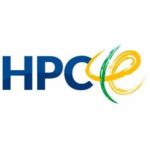Cheyenne is a new 5.34-petaflops, high-performance computer built for NCAR by SGI. Cheyenne be a critical tool for researchers across the country studying climate change, severe weather, geomagnetic storms, seismic activity, air quality, wildfires, and other important geoscience topics. In this video, Brian Vanderwende from UCAR describes typical workflows in the NCAR/CISL Cheyenne HPC environment as well as performance […]
Archives for January 2017
CUDA Made Easy: An Introduction
“CUDA C++ is just one of the ways you can create massively parallel applications with CUDA. It lets you use the powerful C++ programming language to develop high performance algorithms accelerated by thousands of parallel threads running on GPUs. Many developers have accelerated their computation- and bandwidth-hungry applications this way, including the libraries and frameworks that underpin the ongoing revolution in artificial intelligence known as Deep Learning.”
Podcast: Supercomputing Cancer Research and the Human Brain
In this WUOT podcast, Jack Wells from ORNL describes how the Titan supercomputer helps advance science. “The world’s third-most powerful supercomputer is located in Oak Ridge, and though it bears the imposing name TITAN, its goals and capabilities are more quotidian than dystopian. After that, WUOT’s Megan Jamerson tells us about a project at ORNL that uses TITAN to help humans digest vast sums of information from medical reports. If successful, the project could create new understandings about the demographics of cancer.”
Achieving High-Performance Math Processing with Intel MKL 2017
“Many of the libraries developed in the 70s and 80s for core linear algebra and scientific math computation, such as BLAS, LAPACK, FFT, are still in use today with C, C++, Fortran, and even Python programs. With MKL, Intel has engineered a ready-to-use, royalty-free library that implements these numerical algorithms optimized specifically to take advantage of the latest features of Intel chip architectures. Even the best compiler can’t compete with the level of performance possible from a hand-optimized library. Any application that already relies on the BLAS or LAPACK functionality will achieve better performance on Intel and compatible architectures just by downloading and re-linking with Intel MKL.”
Apply Now for 2017 International Summer School on HPC Challenges
Graduate students and postdoctoral scholars from institutions in Canada, Europe, Japan and the United States are invited to apply for the eighth International Summer School on HPC Challenges in Computational Sciences, to be held June 25- 30, 2017, in Boulder, Colorado.
Russian RSC Group Becomes Elite Intel Lustre Reseller
Today RSC Group from Russia announced that the company has achieved highest Elite status in the Intel Solutions for Lustre Reseller Program. Only 9 Intel partners in Europe currently have this status.
Scaling HPC at the Jülich Supercomputing Centre
In this special guest feature, Tim Gillett from Scientific Computing World interviews Norbert Attig and Thomas Eickermann from the Jülich Supercomputing Centre about how JSC is tackling high performance computing challenges.
INRIA to Host Workshop on HPC Roadmap for Energy Industry
The HPC for Energy (HPC4E) project is organizing a workshop entitled HPC Roadmap for Energy Industry. Hosted by INRIA, the event takes place Feb 1 at the French Institute for Research in Computer Science and Automation. “Energy is one of the current priorities for EU-Brazil cooperation. The main objective is to develop high-performance simulation tools that go beyond the state-of-the-art to help the energy industry respond to both future energy demands and carbon-related environmental issues.”
Former SGI’s CEO Jorge Titinger Joins TransparentBusiness as Chief Strategy Officer
Today TransparentBusiness announced the appointment of Jorge Luis Titinger as its Chief Strategy Officer. Mr. Titinger is best known as the former CEO of SGI, a global leader in HPC, which was recently acquired by Hewlett Packard Enterprise. “I’m pleased to join the company which has established itself as a leader in remote work process management and coordination,” said Jorge Titinger. “I believe TransparentBusiness can help accelerate the adoption of a distributed workforce; this can result in significant bottom line benefits for the companies that embrace this new direction and bring the work to where the talent is.”
Video: Stunning Simulation from Blue Brain Project at SC16
In this silent video from the Blue Brain Project at SC16, 865 segments from a rodent brain are simulated with isosurfaces generated from Allen Brain Atlas image stacks. For this INCITE project, researchers from École Polytechnique Fédérale de Lausanne will use the Mira supercomputer at Argonne to advance the understanding of these fundamental mechanisms of the brain’s neocortex.













